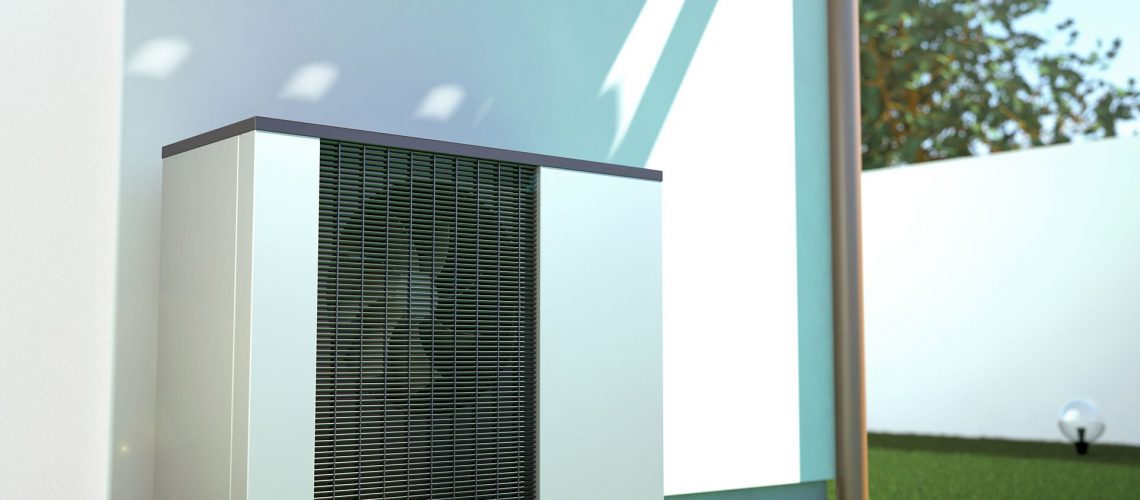The government’s ambitious target to reduce carbon emissions to zero by 2050 will take a gargantuan effort.
To that end, PM Boris Johnson is urging UK homeowners to reduce their carbon footprint by converting to a renewable energy source. Air-source heat pumps are tipped to be among the most popular choices.
Having said that, air-source heat pumps (ASHPs) are not ideal for every home. You need space outside to attach it to a wall. It is also recommended that your home is well-insulated.
When installed correctly, air-source heat pumps can lower carbon emissions and potentially reduce fuel bills – especially if you’re replacing traditional heating systems such as electric storage heaters, oil, LPG (liquefied petroleum gas) or coal.
The government is also offering an additional financial incentive. Homeowners that install an air-source heat pump will be eligible for payments under the domestic Renewable Heat Incentive – and that could save you between £1,341 and £1,586 per year.

How do air-source heat pumps work?
The latest technological developments mean that ASHPs deliver around one-and-a-half to three times more heat into your home in relation to the electricity it consumes.
This is possible because (ASHPs) transfer cold air from the outside and convert it into warm air and hot water for your home.
The technology is so advanced that some models on today’s market can produce heat from cold air temperatures as low as -15°C and generate 40°C heat.
In some parts of the world, you can get air-source heat pump models that heat temperatures of -35°C. You shouldn’t need a system with this much power in the UK though.
ASHPs run on electricity, but don’t use as much energy because they are extracting renewable heat from the environment. Because the pumps produce more heat than the electricity they use, you don’t need to keep your heating system on as long as you do with a conventional boiler.
Heat pumps are basically the same as refrigerators but work the opposite way round.
The systems consist of a compressor and two copper tubing coils – one indoors, one outdoors. The coil is surrounded by aluminium because of its efficiency for conducted heat.
In heating mode, ASHPs extract air from the atmosphere and transfer it to liquid refrigeration coolant. When this passes through the outside coil the air evaporates into a combination of gasses which is heated up.
When the gasses are passed through to the indoor coil, the energy is condensed back into a fluid that feeds your radiators and hot water supply.
How energy efficient are air-source heat pumps?
The efficiency and performance of today’s air-source heat pumps is a result of technological advances.
Thermostatic expansion valves provide precise control of the refrigerant flow to the indoor coil and variable speed blowers compensate for the adverse effects of restricted ducts, dirty filters, and dirty coils.
Improved designs to the coil, electric motor and two-speed compressor have also increased the Coefficient of Performance (COP). This is important to take advantage of lower running costs.
According to the Centre for Sustainable Energy, when you put 1kWh of energy through an air-source heat pump, you will get more than 1kWh of heat energy out.
Because ASHPs can convert cold air temperatures that fall well below freezing, they work all year round. However, the ratio of energy in-energy out changes over the course of the year.
It is estimated that ASHPs deliver a maximum COP of 2 or 3 – meaning for every 1kWh of electricity used, you will receive 2 or 3 kWh of heat. Seasonal COP has adjusted accordingly. The minimum COP is 1.4.
To give you an example, a typical ASHP runs at a COP of 3 when used in temperatures of 7°C or above. This means the heat pump delivers a COP efficiency of 320%.
The higher the COP is the better the heat pump performs. Before investing in a system ask the sales team what the COP range is throughout the seasons. Alternatively, call us and speak to one of our experts for impartial advice.
Types of Air-Source Heat Pumps
There are only two types of air-source heat pump available in the UK; air-to-water heat pumps and air-to-air heat pumps. Another option that works in a similar way is a ground-source heat pump.
You can read about the differences between air-source and ground-source heat pumps on the Energy Saving Trust website.
Air-to-water heat pumps
Air-to-water heat pumps are the preferred choice in the UK. Air is absorbed from the outside, compressed into the water and converted into heat which is then distributed through a wet central heating system and underfloor heating if you have any.
This type of heat pump works more efficiently at lower temperatures than conventional boiler systems and do not cost as much to operate.
Air-to-air heat pumps
Household brand names that manufacture air ventilation and air conditioning systems are also producing air-source heat pumps. Needless to say, air-to-air heat pumps work in a similar fashion to conventional air conditioners.
The difference is that air is absorbed from outside the home rather than generated with a motor and fan. The air that is pulled in is then converted into heat and distributed through the systems indoor unit compressor and air circulation.
Installing an air-source heat pump
If you’re contemplating installing an air-source heat pump, we recommend choosing a recognised and reliable brand such as Baxi, Calorex, Bosch or Mitsubishi. These brands offer a reasonable warranty period.
Our team of knowledgeable engineers can make recommendations if you’re unsure. Feel free to call us for expert advice and a no-obligation quote.
We also install air-source heat pumps in East Sussex and surrounding areas in southeast England. Our radar extends as far and wide as West Sussex, Surrey, Kent, Buckinghamshire, Lincolnshire, Hampshire, Oxfordshire and Greater London.

